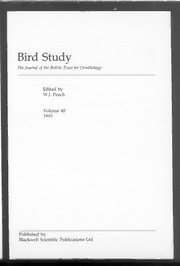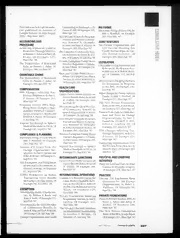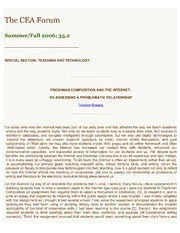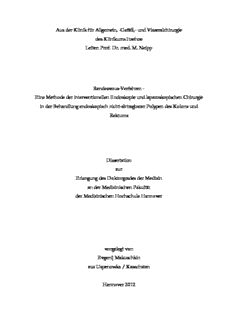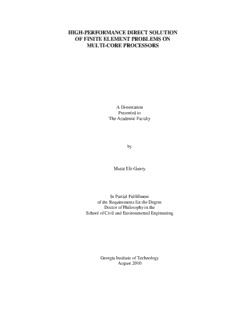
high-performance direct solution of finite element problems on multi-core processors PDF
Preview high-performance direct solution of finite element problems on multi-core processors
HIGH-PERFORMANCE DIRECT SOLUTION OF FINITE ELEMENT PROBLEMS ON MULTI-CORE PROCESSORS A Dissertation Presented to The Academic Faculty by Murat Efe Guney In Partial Fulfillment of the Requirements for the Degree Doctor of Philosophy in the School of Civil and Environmental Engineering Georgia Institute of Technology August 2010 HIGH-PERFORMANCE DIRECT SOLUTION OF FINITE ELEMENT PROBLEMS ON MULTI-CORE PROCESSORS Approved by: Dr. Kenneth M. Will, Advisor Dr. Richard Vuduc School of Civil and Environmental School of Computational Science and Engineering Engineering Georgia Institute of Technology Georgia Institute of Technology Dr. Donald W. White Dr. Ozgur Kurc School of School of Civil and Civil Engineering Department Environmental Engineering Middle East Technical University, Georgia Institute of Technology Ankara, Turkey Dr. Leroy Z. Emkin School of School of School of Civil and Environmental Engineering Georgia Institute of Technology Date Approved: May 3, 2010 ACKNOWLEDGEMENTS First and foremost, I would like to thank my advisor, Dr. Kenneth M. Will, for his support and patience. I’m grateful for his continuous guidance and trust. He always encouraged me to explore different fields and made my PhD experience as exciting as it could be. Under his supervision, I’ve got more than what I’ve dreamed. I also would like to thank Dr. Richard Vuduc for his support and guidance. He provided me insights about various topics in high-performance computing. I’m also grateful to him for giving me access to his computer resources. I also would like to thank Dr. Ozgur Kurc. His previous work provided me insight about parallel computing in structural mechanics. Five years ago, it all started with reading his thesis and browsing his code. I also would like to thank Dr. Donald White for his support and recommendations. I admire his knowledge and inspiration. I will miss our discussions about structural stability and second-order analysis. I also would like to thank Dr. Leroy Emkin for taking the time to serve on my qualifications and committee. His comments and questions make me to continuously increase the size of my test problems. I would like to thank my friend and roommate, Cagri Ozgur, for his never-ending support. He is in half of my fun memories of the past 5 years. I also wish to thank Erinc Atilla for being a true friend for more than 20 years. We owe him a lot for his support and guidance after we came to A-town. I also express my deepest gratitude to Sorian Enriquez for her support and caring. Furthermore, I would like to thank my office mates, iii Gwang-Seok Na, Ben Deaton, Jong-Han Lee, Mustafa Can Kara, Jennifer Modugno and Jennifer Dunbeck. Delicious cakes baked by Jennifer’s gave me the energy required to finish this dissertation. I also would like to thank all of my colleagues in School of Civil & Environmental Engineering, especially Jie-Eun Hur, Jon Hurff, Andres Sanchez, Gence Genc, Masahiro Kurata, Sibel Kerpicci, Yoon-Duk Kim, Shane Johnson, Towhid Ahammad, Murat Engindeniz, Yavuz Mentes, Ilker Kalkan, Cem Ozan, Juan Jimenez, Akhil Sharma, Robert Moser, Murat Eroz, and Ozan Cem Celik. Words cannot express my heartfelt gratitude to my beloved parents, Sevtap Guney and Sukru Guney, and my dearest brother, Emre Guney, who reviewed some parts of this dissertation. None of this would have been possible without their unconditional love and support. iv TABLE OF CONTENTS ACKNOWLEDGEMENTS ............................................................................................... iii LIST OF TABLES ............................................................................................................. ix LIST OF FIGURES .......................................................................................................... xii SUMMARY .................................................................................................................... xxii CHAPTER 1 INTRODUCTION ........................................................................................ 1 1.1 Problem Definition............................................................................................ 1 1.2 Background ....................................................................................................... 2 1.2.1 High-Performance Computing .............................................................. 2 1.2.2 Multi-core and Many-core Processors .................................................. 5 1.2.3 Solution of Linear System of Equations ............................................. 10 1.2.4 Direct Methods for Sparse Linear Systems ........................................ 11 1.2.5 Parallel Direct Solution ....................................................................... 20 1.2.6 Substructure Level Parallelism ........................................................... 21 1.2.7 Survey of Sparse Direct Solvers ......................................................... 23 1.2.8 Design of the Solver Packages ............................................................ 26 1.3 Objective and Scope ....................................................................................... 30 1.4 Thesis Outline ................................................................................................. 34 CHAPTER 2 PERFORMANCE, IMPLEMENTATION, AND TESTING METHODOLOGY ........................................................................................................... 35 2.1 High-Performance Sparse Direct Solution ...................................................... 35 2.2 Other Considerations for Achieving High-Performance ................................ 38 2.3 Performance Evaluation .................................................................................. 41 2.4 Software Optimization .................................................................................... 45 v 2.5 Implementation of the Solver Package ........................................................... 46 2.6 Test Suites ....................................................................................................... 49 CHAPTER 3 PREPROCESSING PHASE ....................................................................... 59 3.1 Graph Representation of the Structures .......................................................... 59 3.2 Initial Node Numbering .................................................................................. 63 3.3 Matrix Ordering Programs .............................................................................. 65 3.4 Graph Partitioning ........................................................................................... 68 3.5 Mesh Coarsening ............................................................................................ 72 3.6 Object Oriented Design of the Preprocessing Phase....................................... 81 CHAPTER 4 ANALYSIS PHASE ................................................................................... 84 4.1 Data Structures ................................................................................................ 84 4.1.1 Assembly Tree .................................................................................... 84 4.1.2 Supervariables ..................................................................................... 88 4.1.3 Factors, Frontal Matrix, and Update Matrix Stack ............................. 89 4.1.4 Frontal Matrix Indices......................................................................... 92 4.2 Node Amalgamation ....................................................................................... 94 4.3 Node Blocking ................................................................................................ 96 4.4 Estimation of the Factorization Time ........................................................... 103 4.4.1 Partial Factorization Time ................................................................. 104 4.4.2 Serial Factorization Time .................................................................. 112 4.4.3 Multithreaded Factorization Time .................................................... 118 4.5 Mapping Algorithm ...................................................................................... 120 4.6 Symbolic Factorization ................................................................................. 125 CHAPTER 5 FACTORIZATION & TRIANGULAR SOLUTION PHASES .............. 127 5.1 Numerical Factorization................................................................................ 127 vi 5.2 Triangular Solution ....................................................................................... 136 5.2.1 Forward Elimination ......................................................................... 136 5.2.2 Back Substitution .............................................................................. 143 5.3 Using a File Storage for the Factors ............................................................. 148 CHAPTER 6 PERFORMANCE OF VARIOUS ALGORITHMS ................................. 153 6.1 Performance of Matrix Ordering Programs .................................................. 153 6.1.1 Program Parameters .......................................................................... 153 6.1.1.1 Graph Compression .................................................................. 153 6.1.1.2 Nested Dissections Stopping Criteria, vertnum, for HAMF .... 155 6.1.1.3 Node Amalgamation within SCOTCH Library ....................... 156 6.1.1.4 Multiple Elimination Parameter, delta, in MMD ..................... 157 6.1.2 Effect of Initial Node Numbering ..................................................... 158 6.1.3 Matrix Ordering for Serial Factorization .......................................... 164 6.1.3.1 2D Models ................................................................................ 164 6.1.3.2 3D Models ................................................................................ 170 6.1.3.3 Transition between 2D and 3D................................................. 180 6.1.4 Matrix Ordering for Parallel Factorization ....................................... 182 6.2 Execution Time of Analysis Phase ............................................................... 187 6.3 Optimal Coarsening ...................................................................................... 190 6.4 Optimal Node Amalgamation ....................................................................... 199 6.5 Partitioning for Parallel Processing .............................................................. 202 6.6 Cut-off for Node Blocking ............................................................................ 204 6.7 Discussion of Results .................................................................................... 208 CHAPTER 7 SOLVER PERFORMANCE .................................................................... 210 7.1 In-core Solver................................................................................................ 210 vii 7.1.1 Serial Solver ...................................................................................... 210 7.1.2 Multithreaded Solver ........................................................................ 221 7.1.3 Analysis of the Multithreaded Performance ..................................... 228 7.2 Out-of-core Solver ........................................................................................ 235 CHAPTER 8 FACTORIZATION USING A GPGPU ................................................... 239 8.1 GPGPU Computing ...................................................................................... 239 8.2 Partial Factorizations on GPGPUs ................................................................ 239 CHAPTER 9 SUMMARY AND FUTURE DIRECTIONS ........................................... 244 9.1 Summary and Conclusions ........................................................................... 244 9.2 Recommendations for Future Work.............................................................. 248 Appendix A: TEST PROBLEMS ................................................................................... 252 A.1 Test Problems with Regular Geometry ......................................................... 252 A.2 Test Problems with Irregular Geometry ....................................................... 274 Appendix B: UTILITY PROGRAMS ............................................................................ 283 REFERENCES ............................................................................................................... 286 viii LIST OF TABLES Page Table 1.1: Features of the direct sparse solver packages .................................................. 24 Table 2.1: Four-thread execution time of the solver package for alternative matrix ordering programs. Test problem is 50×10000 grid with 2D 4-node quadrilateral elements. All units are seconds. ............................................... 39 Table 2.2: Four-thread execution time of the solver package for alternative matrix ordering programs. Test problem is 30×30×30 grid with 3D 8-node solid elements. All units are seconds. .................................................................... 40 Table 2.3: An illustrative example for performance plots. The values for a performance criterion are shown for three configurations and four models. ..................... 43 Table 2.4: Test problems with regular geometries that can be solved using 8 Gbyte main memory only. ................................................................................................ 52 Table 2.5: Benchmark suite of 40 test problems. The test suite is used to tune the solver package. ........................................................................................................ 53 Table 2.6: Statistics for the benchmark suite with 8 large problems. Benchmark suite is used to evaluate the performance of the in-core solution. ............................ 54 Table 2.7: Statistics for the benchmark suite with 8 very large problems. Benchmark suite is used to evaluate the performance of the out-of-core solution. .................. 54 Table 3.1: Effect of explicit partitioning on the numerical factorization times for the problem q500×500. ....................................................................................... 71 Table 3.2: Performance of the element based coarsening scheme for q500×500. ............ 78 Table 3.3: Performance of the node based coarsening scheme for q500×500.................. 79 Table 3.4: Performance of the element based coarsening scheme for f500×500. ............ 79 Table 3.5: Performance of the node based coarsening scheme for f500×500. ................. 79 Table 3.6: Performance of the element based coarsening scheme for s15×15×250. ........ 80 Table 3.7: Performance of the node based coarsening scheme for s15×15×250. ............. 80 Table 3.8: Performance of the element based coarsening scheme for f20×20×20. .......... 80 ix Table 3.9: Performance of the node based coarsening scheme for f20×20×20. ............... 81 Table 4.1: Effect of node amalgamation for f500×500..................................................... 95 Table 4.2: Profile information for the multifrontal factorization of f500x500, without node blocking ................................................................................................ 97 Table 4.3: Profile information for the multifrontal factorization of f500×500 with node blocking ....................................................................................................... 102 Table 4.4: The cut off point for the node blocking for the test problem f500×500 ........ 103 Table 4.5: Example table for partial factorization speeds of different frontal matrix sizes. Table values are given in GFlop/sec. .......................................................... 107 Table 4.6: Partial factorization time estimations for executing MKL kernels with a single thread. .......................................................................................................... 109 Table 4.7: Partial factorization time estimations for executing MKL kernels with four threads. ........................................................................................................ 112 Table 4.8: Choosing the best pivot-ordering among alternatives based on the estimated factorization time (f75×150×5) ................................................................... 118 Table 5.1: For frontal matrices with different ne/nr ratios, the operation counts for computing L , L andS given in terms of total operation count for the B off partial factorization ..................................................................................... 130 Table 5.2: Assembly tree statistics for the example test problems ................................. 131 Table 5.3: Arithmetic operation counts for the factorization of the example test problems ..................................................................................................................... 131 Table 5.4: For example test problems, operation counts for the forward elimination with 100 RHS vectors ......................................................................................... 139 Table 6.1: Performance of matrix ordering programs AMF and HMETIS for 3D frame models with different average node adjacencies......................................... 177 Table 7.1: Serial execution time of the different phases of the SES solver .................... 216 Table 7.2: Serial execution time of the different phases of the PARDISO solver .......... 217 Table 7.3: Preprocessing configuration that produces the best estimated serial factorization times for the benchmark suite of 8 large test problems. ........ 218 Table 7.4: Preprocessing configuration that produces the best estimated four-thread factorization times for the benchmark suite with 8 large test problems. .... 225 x
Description:The list of books you might like

Atomic Habits James Clear

The Sweetest Oblivion (Made Book 1)

As Good as Dead

The Spanish Love Deception

Nonlinear Oligopolies: Stability and Bifurcations
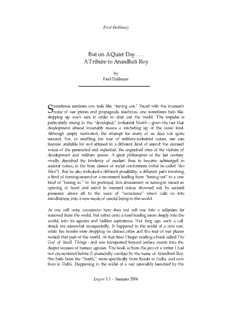
But on A Quiet Day . . . A Tribute to Arundhati Roy
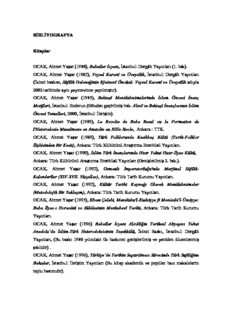
BİBLİYOGRAFYA Kitaplar OCAK, Ahmet Yaşar (1980), Babaîler İsyanı, İstanbul
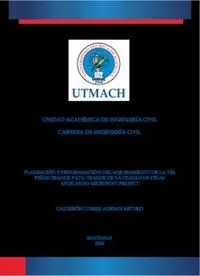
Convert JPG to PDF online
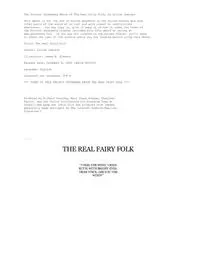
The Real Fairy Folk by Louise Jamison

Выступления полномочного представителя Президента РФ в Конституционном Суде Российской Федерации. 2015–2018 годы. Сборник. Том 2. 2017–2018 годы
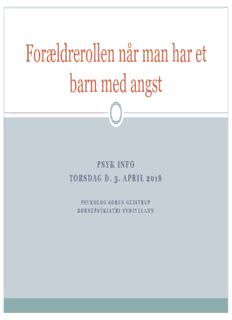
Børn og angst
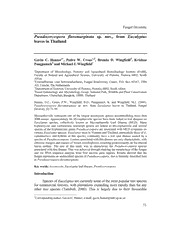
Pseudocercospora flavomarginata sp. nov. from Eucalyptus leaves in Thailand

bruun rasmussen fine art + antiques
![Algebra [Lecture notes] book image](https://cdn-2.pdfdrive.to/media/content/thumbnails/247316f0-0428-4411-ac4b-9884dd394275.webp)
Algebra [Lecture notes]
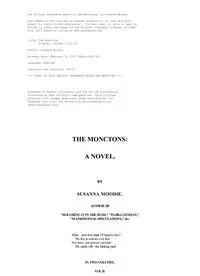
The Monctons A Novel Vol II by Susanna Moodie

ERIC ED381413: Emancipatory Education and Action Research. Action Research Series No. 1.
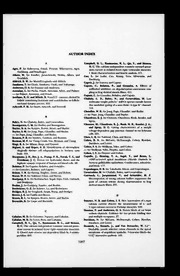
The Journal of General Physiology 1993: Vol 102 Index
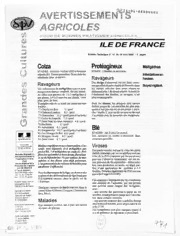
Avertissements Agricoles - Grandes cultures - Ile de France - 2006 - 12
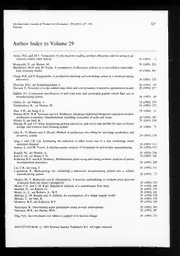
International Journal of Production Economics 1993: Vol 29 Index
